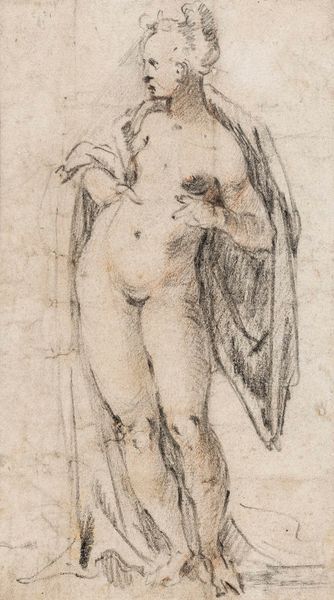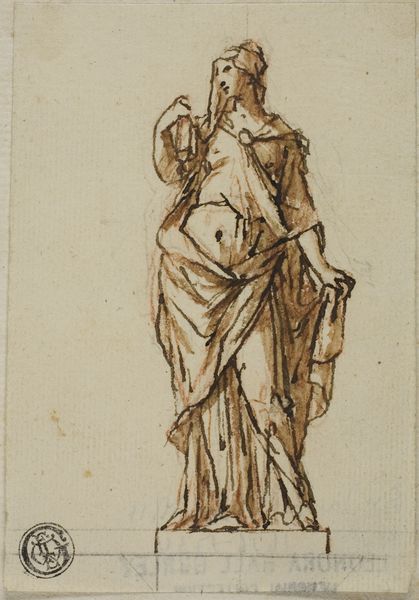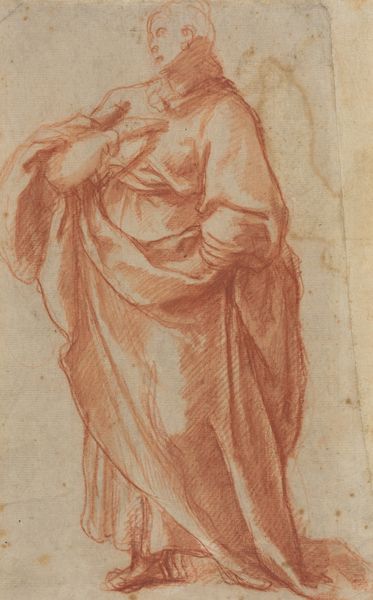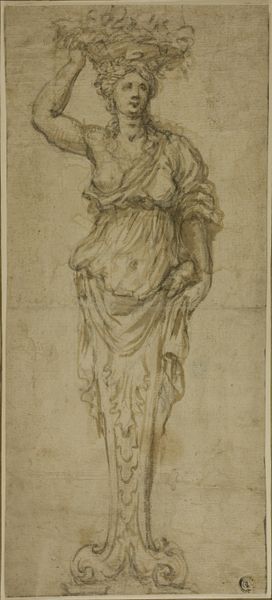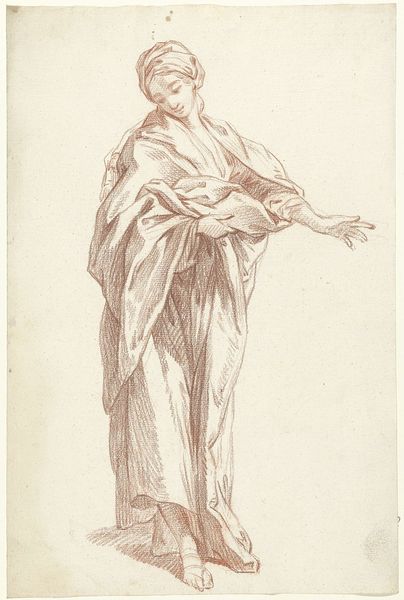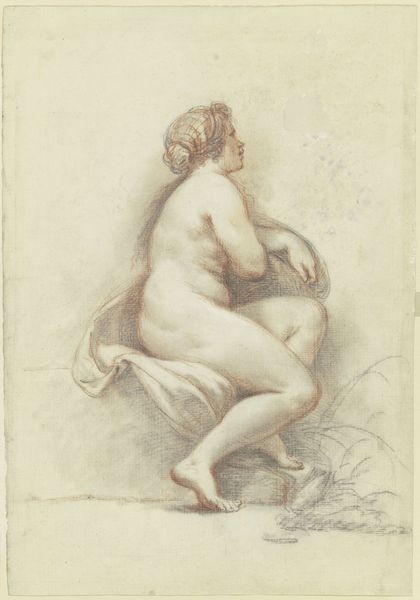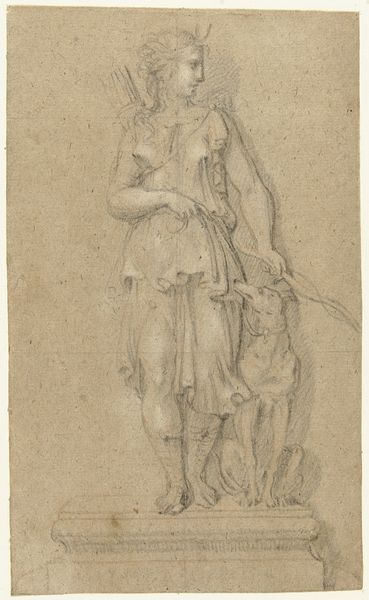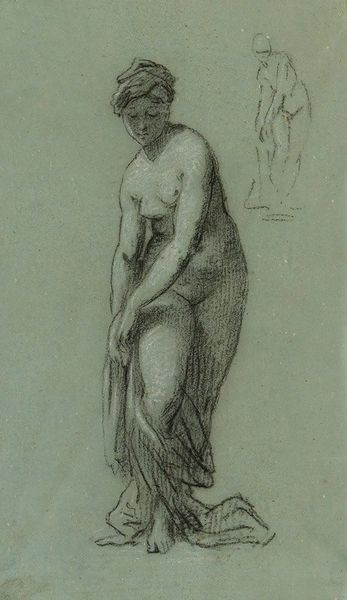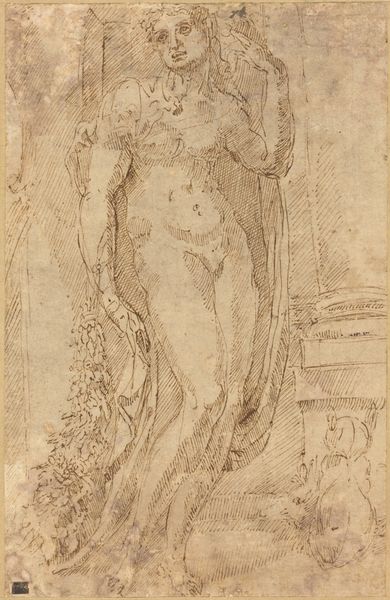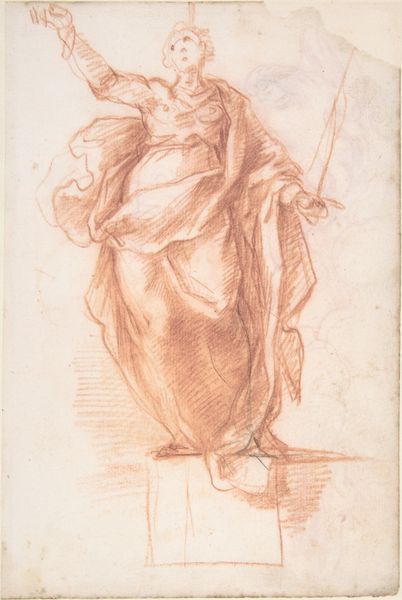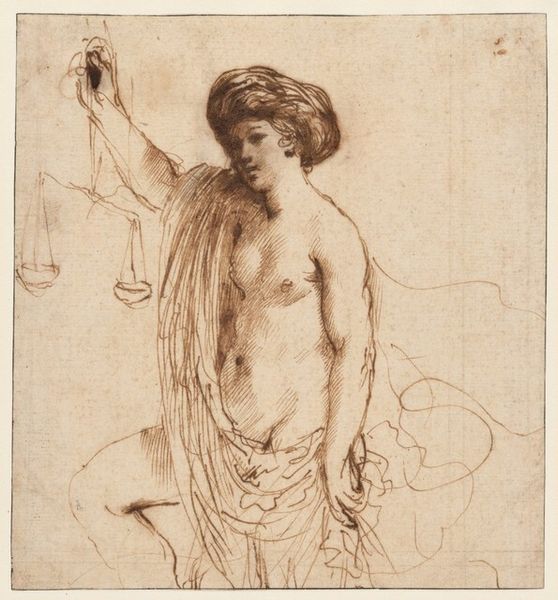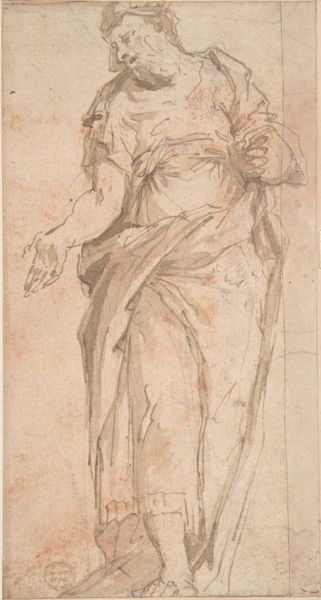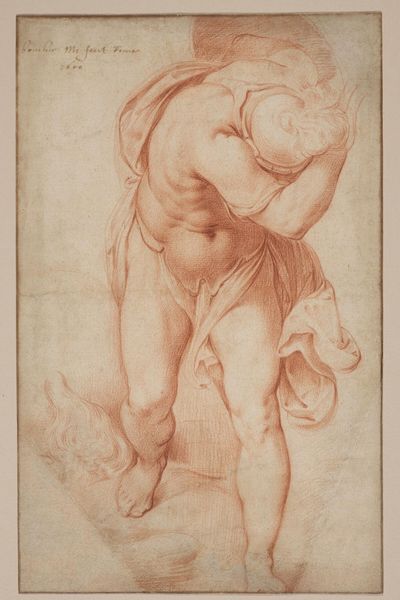
drawing
#
drawing
#
baroque
#
dutch-golden-age
#
figuration
#
genre-painting
#
nude
Copyright: Public Domain: Artvee
Curator: We're looking at "Nude Woman with a Snake," a drawing by Rembrandt van Rijn from 1637. My initial impression is its sensuality, softened by the sketch-like quality of the lines. Editor: It strikes me as rather awkward. The redness of the chalk, perhaps sanguine, highlights a certain...fleshy reality of the female body, in a manner divorced from idealized beauty, a study in process rather than a polished representation. Curator: Absolutely. Note the use of red chalk, allowing Rembrandt to explore light and shadow with subtle gradations, emphasizing volume. Consider also the diagonal composition and the dynamism it lends the figure. There is an emphasis on her frontality and placement. Editor: That "dynamism," as you call it, speaks more to the contingencies of the studio and workshop. Look at the figure's pose; it suggests a model struggling to hold a difficult position. What were the actual material conditions of making this piece, including access to models, labor and training? The model’s form may be the subject, but the artistic labor required is foregrounded by that visible effort in depicting her. Curator: The drawing also reveals a departure from purely idealized forms. This realism suggests the Baroque emphasis on portraying the human experience. Editor: The way the folds in her headdress and drapery are rendered—a kind of material inventory happening before our eyes! Each mark communicates that labor explicitly. It almost anticipates later processes we find in Impressionism. Curator: I read this work within Rembrandt’s wider study of female nudes and depictions of biblical narratives and figures of mythology; he employed models from his everyday existence, in a move which has deep historical and social resonance for him as a modern interpreter of Renaissance aesthetic philosophy. Editor: All the more significant if we consider who had access to those means of production and representation at that historical juncture! From this perspective, Rembrandt’s sketches point beyond his singular genius toward the broader conditions that shaped artistic practice itself. Curator: So, while I am fascinated by its artistic structure, the use of light and the female form itself, you view it through the process by which the artwork came into existence. Editor: Precisely. Analyzing the means, methods and even the literal materials—that's where the true story lies.
Comments
No comments
Be the first to comment and join the conversation on the ultimate creative platform.
